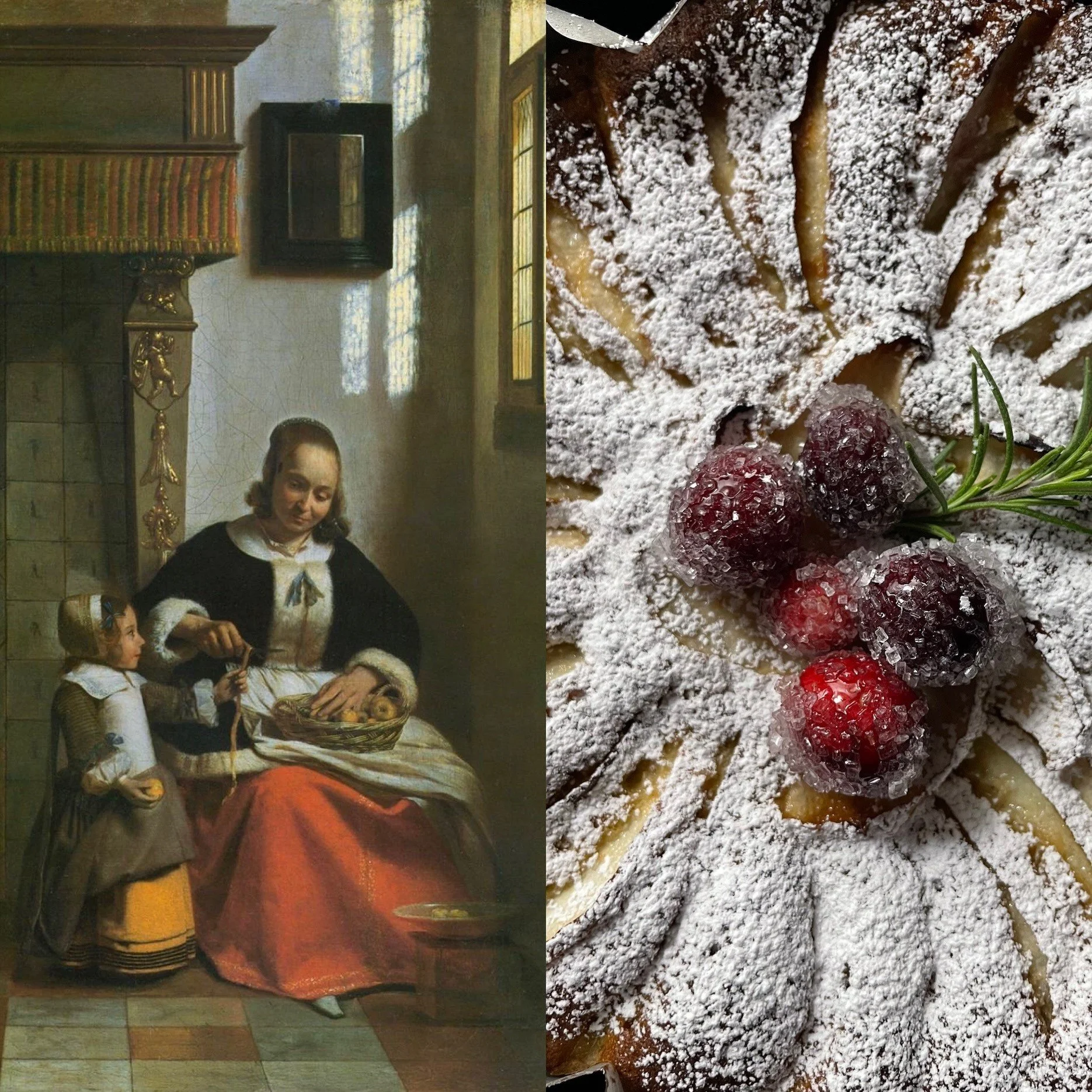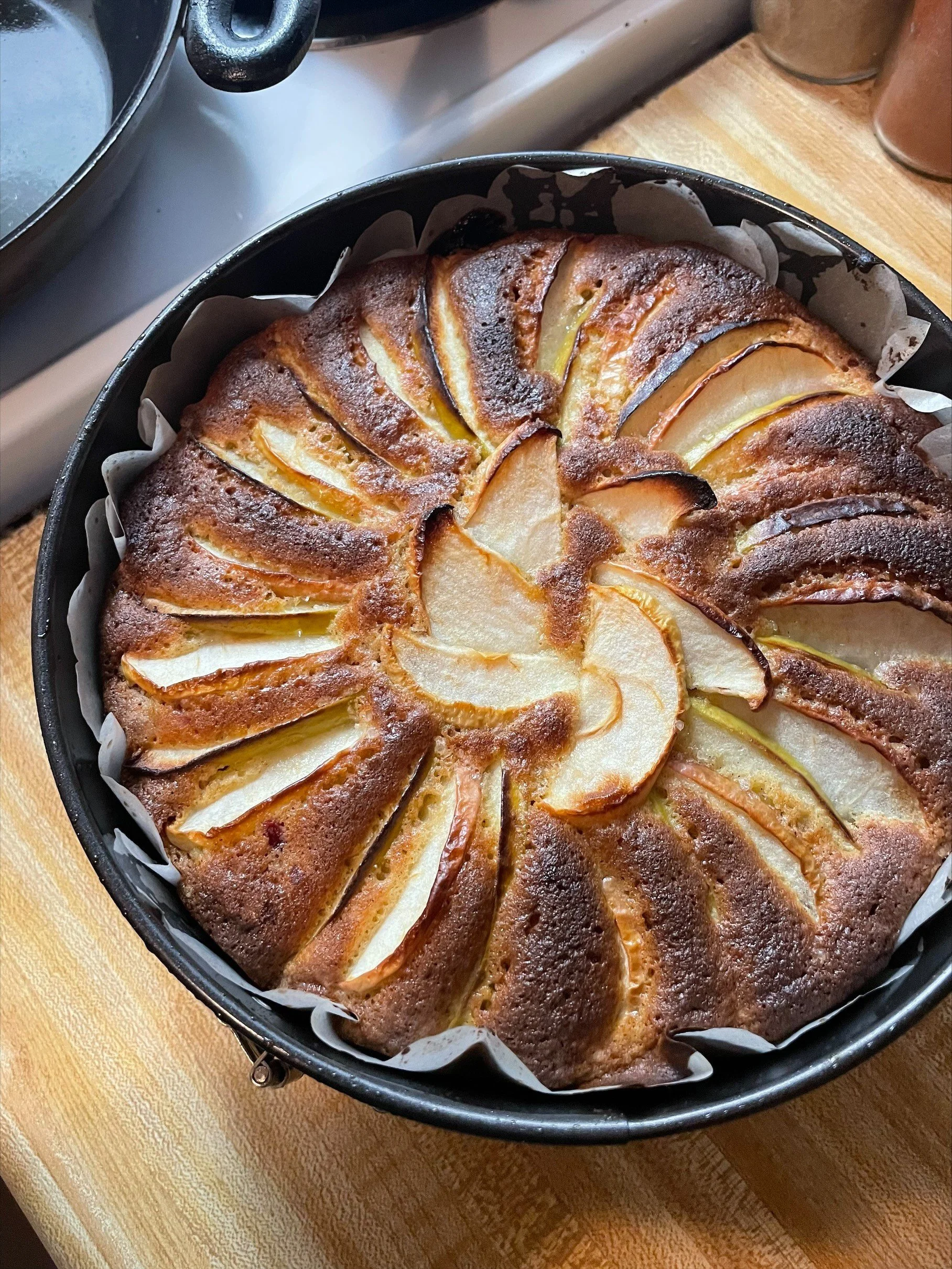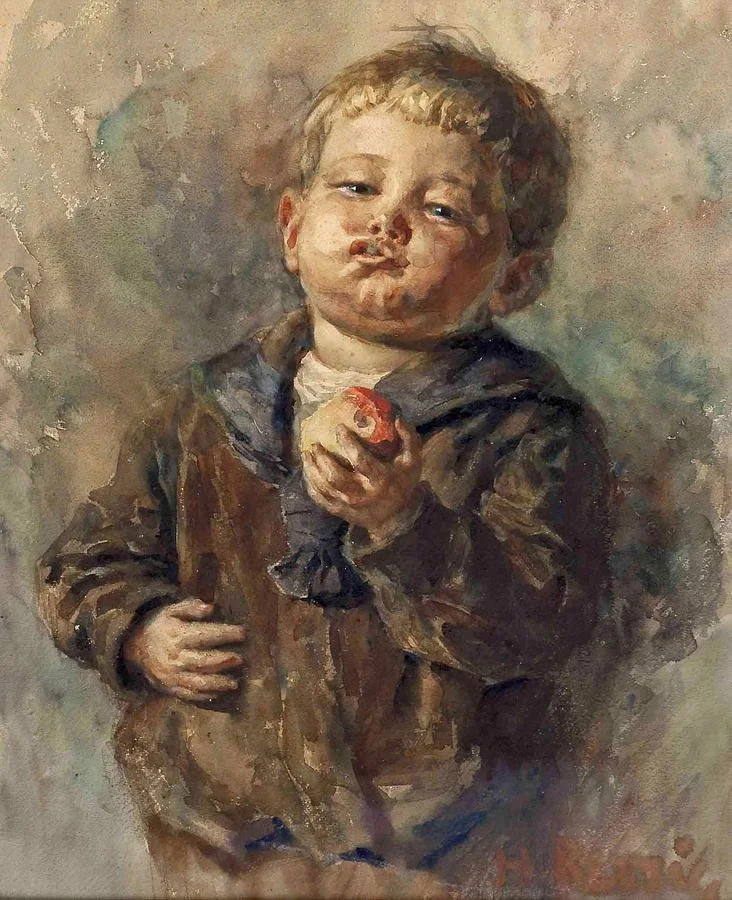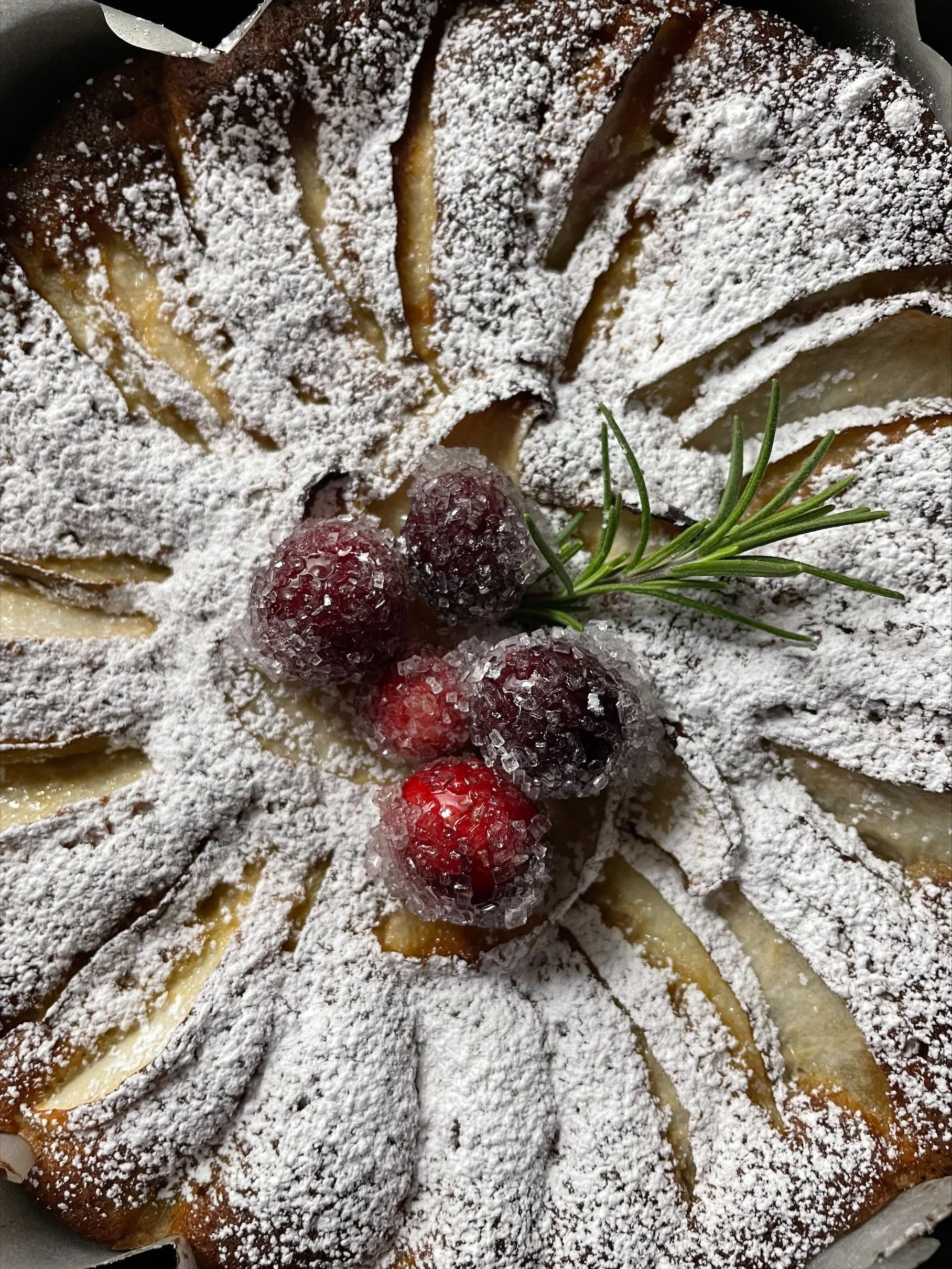Professor Butter Beard’s Apfelkuchen and “A Woman Peeling Apples”
“He forth from the closet brought a heap
Of candied apples, quince, and plum and gourd;
With jellies soother than the creamy curd,
And lucent syrops, tinct with cinnamon;
Manna and dates, in argosy transferr’d
From Fez; and spiced dainties, every one,
From silken Samarcand to cedar’d Lebanon.
- John Keats, “The Eve of St. Agnes,” published 1820
Apfelkuchen. It’s just fun to say! It’s almost like a verbal wink. I love making these festive German cakes around the holiday season with the last of my apples from the autumn farmer’s markets. The crisp tart apples dress the cake and the candlelit feasts with dignity and a joyful burst of sweet and spice that promise light’s return and a glorious growing season ahead.
Usually, it is work of art that inspires me to bake. This week was surprisingly topsy turvy. The smell of the baking fruit seduced me into investigating images of apples throughout the history of art. Historically, apples were thought to symbolize femininity, beauty and prosperity and they often appeared in myths. Hercules procured golden apples from the garden of the Hesperides, and the apple given by Paris to Venus was partly the cause of the Trojan War! In alchemy, apples were thought to represent immortality, for in the garden of the Hesperides they were the fruit that could grant eternal life. And in the Bible, the apple is a symbol of man’s fall and at the same time the fruit of knowledge.
All these thoughts encouraged waves of images dancing in my mind ranging from Albrecht Dürer’s engraved “Adam and Eve” to Heinrich Rettig’s watercolor “Boy With Apple In Hand.” But it is Pieter de Hooch’s “A Woman Peeling Apples” that whispers its story most directly into my soul. It may be memories of peeling apples on the back porch with my grandmother or recognizing the white Dutch light sweeping through the window, or just the overall captured sensation of comfort and peace.
In the right-hand corner of the sun-lit room sits a woman facing the viewer while maintaining a smiling watchful eye over her young assistant. She wears a black velvet jacket trimmed with warming fur, a sumptuous red skirt, and a crisp white apron. In her lap, she holds a basket of apples to be peeled and shows off a long single rind in her right hand to the little girl who I hope will enjoy it like a shoelace of red licorice. The white Dutch sunlight enters through the window and warms the room while the wood in the fireplace crackles and heats the simmering kettle hanging above the flames.
Like most of de Hooch’s works, this genre painting depicts a quiet domestic scene from his time. It has been interpreted that the elaborately decorated fireplace and elegant fur and embroidery in the mother’s clothes imply a prosperous household, and the cupid sculpted into the fireplace between the two figures implies a happy one. The sensitive handling of the natural light led 19th-century art historians to originally attributed the work to Johannes Vermeer who lived in Delft at the same time as de Hooch. However, Vermeer’s works typically portray a woman working alone instead of a family scene such as this. Modern scholars now agree that this work is by the hand of de Hooch, and acknowledge the heavy influence of Vermeer.
My baker’s soul moves the story forward contemplating what comes next for these apples so tenderly prepared by this mother and daughter. I’m hoping the kitchen’s ovens are maintaining heat after roasting the day’s game and are ready to take on the “candied apples, quince, and plum and gourd.” Maybe their delightful German neighbor will supply a family recipe for Apfelkuchen, and the Dutch youngsters will giggle as they attempt to pronounce the verbal wink.
Apfelkuchen (German Apple Cake)
One 10” Cake (springform pan required)
Freely adapted from a classic German recipe
1 cup all-purpose flour
4 Tbsp nut flour (I use Bob’s Red Mill Hazelnut Flour)
1 ½ tsp baking powder
1 tsp Chinese Five-Spice
½ tsp fine sea salt
1 cup granulated sugar (plus 2 Tbsp more to sprinkle over the apples before baking)
4 ounces almond paste
8 Tbsp unsalted butter, room temperature
3 large eggs, room temperature
1 tsp vanilla paste
2 tsp orange flower water
2 Gala or Pink Lady apples, cored and sliced 1/8” thick
1 ½ cups fresh cranberries
Confectioner’s sugar to dust the finished cake
1) Preheat your oven to 375 degrees.
2) Butter a 10” springform pan and line with a circle of parchment that comes 1/2” over the top edge of the pan.
3) Whisk together the flour, nut flour, baking powder, five-spice and salt. Set aside.
4) In a standing mixer with the paddle attachment, mix together the sugar and almond paste until no large lumps of paste remain. Add the butter and cream together on medium speed for 3-5 minutes until smooth.
5) Lower the speed and add the eggs one at a time, scraping the bowl to ensure an even mix. Add the vanilla and orange flour water.
6) While still on low, add the dry mix, a bit at a time, until the mix is smooth again.
7) Remove the bowl from the mixer and fold in the fresh cranberries (reserving about five to use for garnish). Spread the batter into the prepared pan. It will be thick!
8) Core the apples, cut in half and then into 1/8” slices. I leave them unpeeled. Arrange the apple slices in a circular pattern covering the entire top of the cake. Sprinkle 2 Tbsp sugar over the apples.
9) Bake 50-55 minutes until the cake feel firm and the apples are slightly browned.
10) Let the cake cool in the pan. Before serving, remove the springform ring and dust the top with confectioner’s sugar.
Note – to make candied cranberries – Use a toothpick to pierce and hold each cranberry. Coat the berry with clear corn syrup and then roll in granulated sugar. Set the sugared cranberries on a piece of parchment paper to dry for one hour before using.





